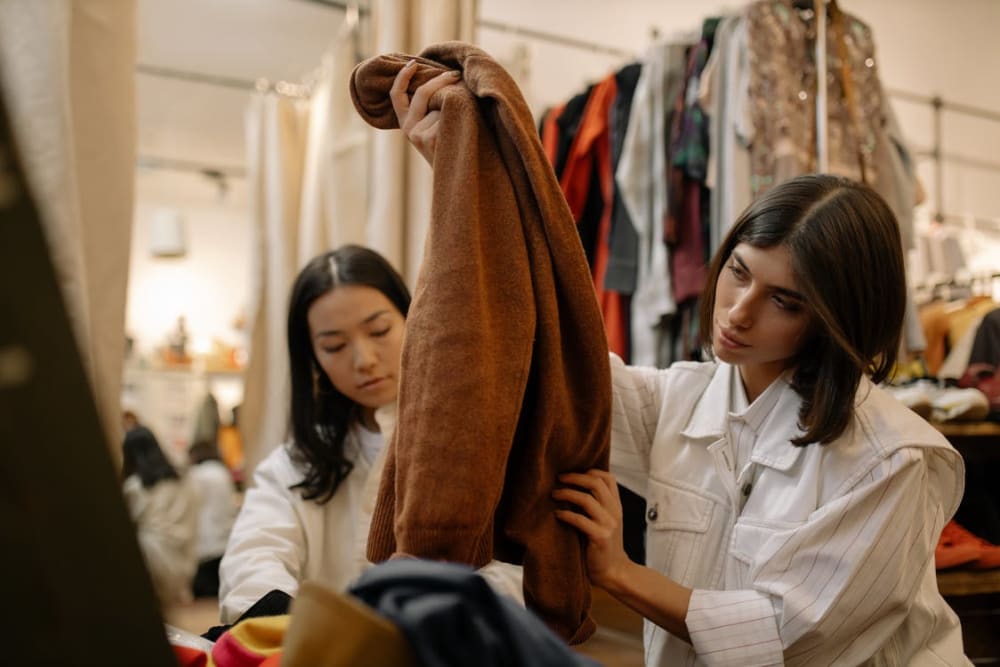Events over recent years have meant that people aren’t shopping the way they used to. The rise of home working and economic pressures have resulted in less need for clothes and reduced disposable income. The economy will recover, but where will consumers shop? Will they take a new interest in sustainable brands? Or will they turn to preloved and vintage clothing? The fashion industry is moving towards a more sustainable future and the global fashion resale marketing is rapidly growing. Motivation led by younger generations, stems from the desire to help the environment and to seek an alternative to fast fashion.
Preloved becomes fashionable
In recent years vintage has become fashionable and has been worn by many celebrities – even Kim Kardashian chose to wear the iconic Marilyn Monroe dress to the Met Gala this year! The pre-loved clothing market is expected to double in the next five years, and to be twice the size of the fast fashion market by 2030. The rise of easy-to-use resale sites has also made pre-loved a popular sustainable fashion choice.

Resale platforms such as Depop, Vinted and eBay are more popular now than ever and the savvy shopper can get their designer fix by renting an outfit for a special occasion through platforms such as Hurr or By Rotation. More and more consumers are looking towards pre-loved fashion and generation Z has been the driving force for this, with 80% of Generation Z having bought a pre-loved item and 62% of Generation Z and Millennials saying they look for a pre-loved item before purchasing a new one.
Vintage on the rise
The rise of sustainable fashion choices has even impacted big TV productions such as ITV2’s Love Island. Previously Love Island’s fashion sponsor was ‘I Saw It First’, a large fast fashion company who sells garments for as low as £2.30. In 2019, they saw a 67% increase in their sales due to the show. However, fast fashion produces 92 million tonnes of waste per year. After a lot of criticism, Love Island announced that eBay would be the official fashion sponsor of the season this year, with the reality stars wearing many pre-loved garments among their wardrobe options, which shines the spotlight on more sustainable choices. Whilst islanders also get to wear their own wardrobe, they are encouraged to wear the pre-loved clothes provided by eBay.
The rise of resale and desire for vintage clothing has many positive sides – it’s better for the environment, it reduces waste by extending the lifespan of existing garments and it helps us see value in our wardrobes beyond what’s new and trendy. But pre-loved clothing has traditionally been the low-cost option for consumers on a tight budget. The new-found desire for vintage may have the knock-on effect of pushing up prices and reducing availability of good quality used items, which perversely may have the potential of driving less affluent consumers to low-cost fast fashion producers. This is something that will need to be observed as the market develops.
A conscious fashion approach
What is clear is that we must reduce the amount of clothing that ends up in landfill. Be that buying from sustainable brands, resale sites or up-cycling a garment into something new. Fundamentally, development of the preloved market means we, as consumers, are recognising the value of what we already have and own. This is a positive step towards a more conscious fashion approach, and it is this conscious mindset that drives the choices we make today, which will have a big impact on the world of tomorrow.
Like what you just read? Share it on:

